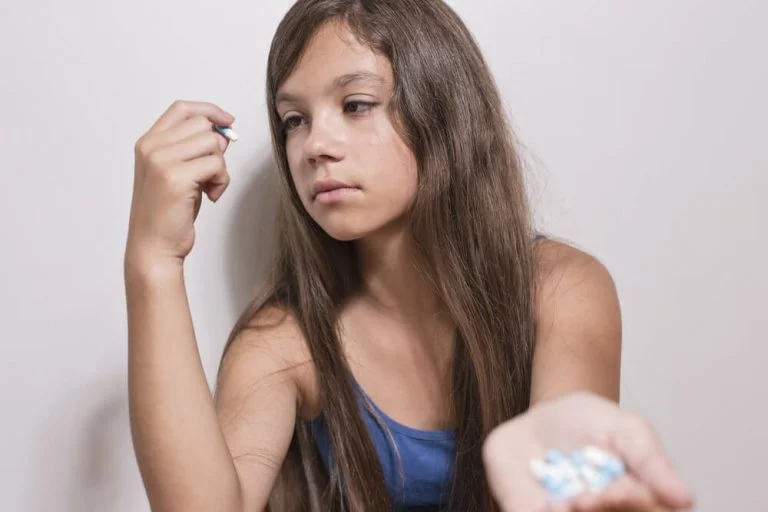How to Get Your Child into Rehab
Teens today are more likely to smoke marijuana than cigarettes in the United States, according to the National Institute on Drug Abuse. Prescription opioids remain readily available to many teens amidst the opioid crisis and the overprescribing of medications. There is no doubt that navigating parenthood during one of the biggest drug problems the country has ever seen isn’t easy. When faced with a substance-abusing child, there may be many thoughts running through your mind, chief among them being how to get your child into rehab.

How to Get Your Child into Rehab – Tips to Help You Talk to Your Child About Substance Abuse
In this article, we will talk about the changes your child may be going through due to their addiction and what the most effective strategies are to talk to and persuade your child to go to rehab.
How Addiction is Changing Them
A parent’s love and concern for their child’s well-being is one of the most potent forces in nature. Even in the animal kingdom, the desire to nurture and protect offspring trumps even one’s self-preservation instinct. When faced with the drastic changes that substance abuse can cause in your child – the person whom you brought into this world and cared for since birth –, it can be a soul-crushing experience as their behavior changes and you witness their life slipping into the grips of addiction.
Addiction is a powerful disease that affects behavior through the changes that occur in the structure and function of the brain. This causes a host of changes that include:
- Aggressive and volatile behavior
- Overly emotional
- Denial of the problem
- Secretive behavior
- Paranoia
- High levels of Impulsivity
- Manipulative behavior
- Laziness
However dire the situation may seem, you can still get back the person you know they truly are; but first, you have to know how to get your child into rehab when they will likely deny the problem and fight you on it.
How to Get Your Child into Rehab
Before we talk about how to get your child into rehab, an important fact about addiction treatment is that the addict doesn’t have to be willing to go to rehab for the treatment to be effective, according to the Principals of Effective Treatment by the National Institute on Drug Abuse. Of course, it shouldn’t have to get to that point; the following explores tips on how to get someone to go to rehab.
Educate Yourself
Addiction is a very complex disease, and going into an intervention or conversation about drug and alcohol abuse blind can have the opposite effect than what you’re after. It’s important when facing a mental disorder such as addiction that you educate yourself as best you can on how the disease works and the stages of recovery. Not only can this help get your child into rehab, but it can help with the support that you’ll need to give them through their recovery.
Choosing the Right Time
While it may seem like approaching your child when you see that they recently took the substance is a good idea, it’s best to avoid trying to show them that they need help while they are under the influence of the substance. The best way on how to help an addict get help is to talk to them when they aren’t influenced by the effects of the substance. Along with choosing a time that they aren’t high or intoxicated, a neutral, private setting should also be chosen; one where there are distractions or outside pressures.
Genetics and Addiction
Approaching the situation from a hypocritical point of view will only result in them latching onto that to fight to go to rehab and stopping substance abuse. According to addiction sciences, genetic factors account for about half of a person’s risk of becoming an addict. This means that if addiction runs in the family, then the child has a high chance of becoming addicted, too. If you or your partner abuses alcohol or drugs, then it is highly likely that your child is aware of it, and it affects their behavior.
How to get someone to go to rehab from this standpoint is about being honest with them and explaining and sharing your own struggles with addiction and substance abuse. Express your concern about their wellbeing and how you don’t want them to have to experience the same. If you suffer from substance use disorder, then it may be the time to find help for yourself and act as an example.
Don’t Let Your Emotions Get the Better of You
Emotions during your talk, especially when it concerns your child, can negatively affect the outcome. It’s likely that, due to the effects that an addict has on those around them, you may have strong emotions regarding their abuse, or addiction itself. It’s is best to plan ahead and think carefully about what you want to say to them so that your emotions don’t interfere with the goal of getting them into rehab.
It’s important to remember that addiction is a disease, and while their actions may have caused great pain, it’s a symptom of the disease.
Avoid Telling Them How They Should Live Their Life
If you were to just tell your child what they should do and how they should live, then you will likely be met with rebellion, as is common in the child/parent dynamic. Your focus should be on the consequences of their actions, which teens are usually not thinking about; they may not know the true dangers of their actions.
How to get your child into rehab should be from a supportive position, sharing with them your concerns and the risks they are opening themselves up to, and never just a command.
Enabling Behavior
Enabling behavior refers to things that – often without knowing – those around the addict do that enable their behavior. It’s common even for parents to enable their child’s substance-abusing behavior. You may feel that you are doing something out of love when in fact it’s allowing them to continue doing what they are doing. Enabling behavior includes giving them money even after they’ve burned through their allowance or covering from them when they do something bad.
How to help an addict get help starts with not enabling the behavior on any level.
Intervention and Consequences
If you have attempted to talk to you child about their substance abuse and they still don’t understand the risks or are ignoring it, then an intervention is your next step. It can be greatly beneficial to have an intervention specialist aid you in this endeavor.
With an intervention also comes consequences; if everything else has failed, then you can make them aware of the consequences if they don’t go to rehab. Be stern and follow through on your ultimatum – this can be the element that finally makes them realize that it’s time to get help.
If you or a loved one is struggling with addiction, get help right away. Make a phone call that will connect you to a professional drug treatment center. The call you make may save your life or the life of someone you love. Call us today at (800) 429-7690.








